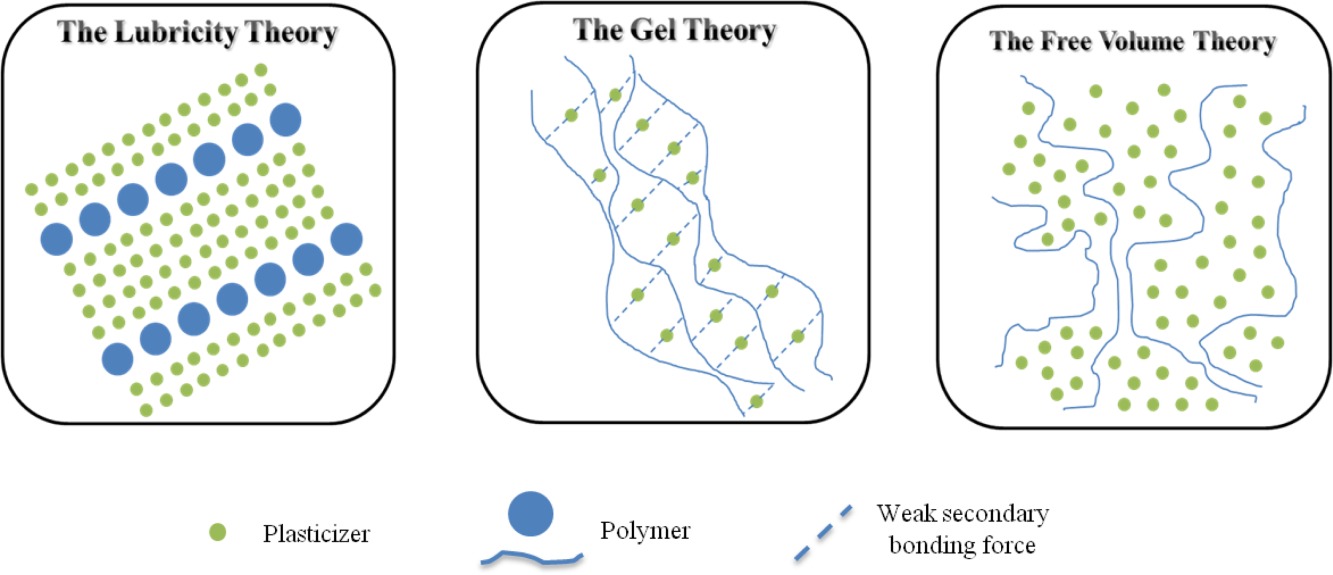The lubricity theory, free volume theory and the gel theory are three theories that explain the plasticization of rubber compounds.

The lubricity theory suggests that plasticizers improve the lubrication between the polymer chains in the rubber compound, which allows for easier movement and greater flexibility. According to this theory, the plasticizer molecules are inserted between the polymer chains and act as a lubricant, reducing the friction between the chains and allowing them to slide past one another more easily. This results in a softer and more pliable material.
The Free Gel theory, on the other hand, proposes that plasticizers dissolve some of the polymer chains in the rubber compound, creating a “free gel” of individual polymer molecules that are able to move independently of one another. This free gel is then able to flow more easily, resulting in increased flexibility and workability. According to this theory, the amount of plasticizer added to the rubber compound determines the size of the free gel and therefore the degree of plasticization.
Both of these theories suggest that plasticizers work by reducing the intermolecular forces between polymer chains, allowing for greater movement and flexibility. However, the specific mechanisms of plasticization may vary depending on the type of rubber compound and the specific plasticizer used.
According to the free volume theory, the movement and flexibility of polymer chains in rubber is limited by the amount of free volume between them. When a plasticizer is added to the rubber, it decreases the intermolecular forces between the polymer chains, creating more free volume. This increased free volume allows the polymer chains to move more freely, resulting in greater flexibility and workability.
The free volume theory suggests that the degree of plasticization depends on the amount of free volume created by the plasticizer. Different plasticizers can have varying effects on the free volume of a rubber compound, depending on their molecular structure and interaction with the polymer chains.
Overall, the free volume theory provides a useful framework for understanding the role of plasticizers in rubber compounds and their effects on the mechanical properties of the material.
 (909) 987-1774
(909) 987-1774 Email Us
Email Us







